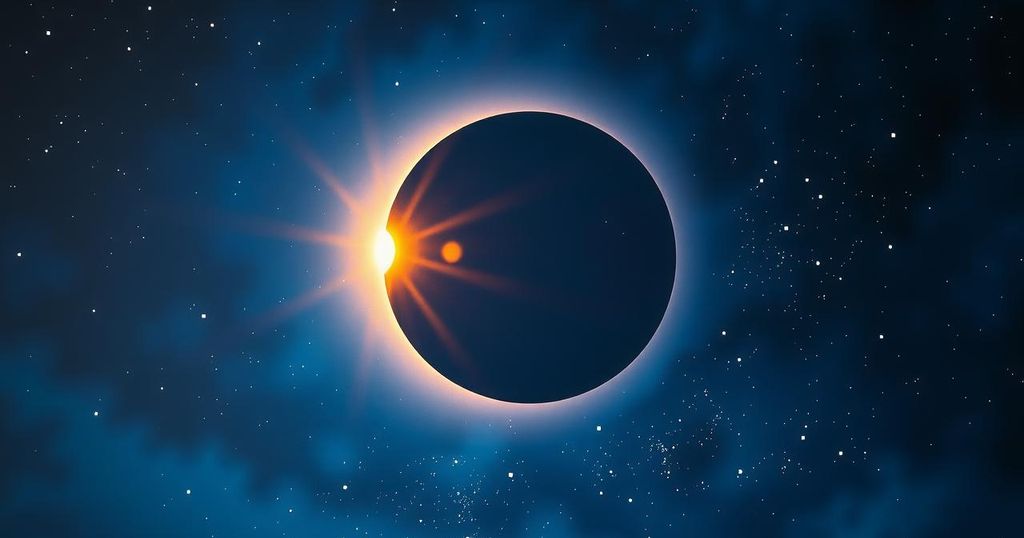Partial Solar Eclipse Draws Attention Across the Northern Hemisphere
Today features a significant partial solar eclipse visible in the northern hemisphere from eastern Canada to Siberia, lasting approximately four hours. The eclipse will peak in northeastern Canada and Greenland. Proper eye protection is essential for safe viewing.
Today marks a significant astronomical event as the sun will be partially obscured by the moon during a solar eclipse visible across the northern hemisphere, stretching from eastern Canada to Siberia. This partial solar eclipse, the 17th of the 21st century and the first of this year, is anticipated to last approximately four hours, commencing at 8:50 AM UTC and concluding around 12:43 PM UTC.
According to Florent Deleflie, an astronomer from the Paris-PSL Observatory, Mauritania and Morocco will be the premier locations to observe the eclipse, while residents in northern Siberia will be the last. The eclipse will also be observable in Europe, with its peak expected at 10:47 AM UTC over northeastern Canada and Greenland. This area will present the most spectacular view, with up to 90% of the solar disk covered; however, complete darkening of the sky will not occur.
A solar eclipse transpires when the sun, moon, and Earth are in alignment. This instance will not witness a total eclipse, as the moon’s shadow will not touch the Earth’s surface, remaining in space instead. Deleflie clarifies that “the alignment was not perfect enough for the shadow cone to touch the Earth’s surface. It will remain in space, meaning no total eclipse will occur anywhere at any time.”
In France, the eclipse is viewable between 10:00 AM and 12:00 PM UTC, with 10% to 30% of the sun’s disk obscured depending on the specific location. While no significant darkness will be noticeable, observers must use eye protection to prevent potential harm from direct sunlight. The astronomer emphasized that “the slightest defect in the surface of the glasses, even if it’s a microscopic hole, can cause eye burns.”
This solar eclipse follows closely after a total lunar eclipse that rendered the moon a reddish hue. Deleflie noted that this occurrence is typical as the moon has completed half its orbit around the Earth. The last partial solar eclipse observed in mainland France took place on October 25, 2022. Looking forward, a total solar eclipse is scheduled for August 12, 2026, albeit its path will bypass France, leading to 92% and 96% coverage in Paris and Marseille, respectively.
In conclusion, today’s partial solar eclipse offers a captivating opportunity for viewers across various regions of the northern hemisphere, with particular visibility in eastern Canada and Siberia. Safety measures regarding eye protection remain critical to prevent ocular damage. With ongoing lunar and solar events in the coming years, the astronomical community eagerly anticipates future celestial displays.
Original Source: www.jordannews.jo




Post Comment